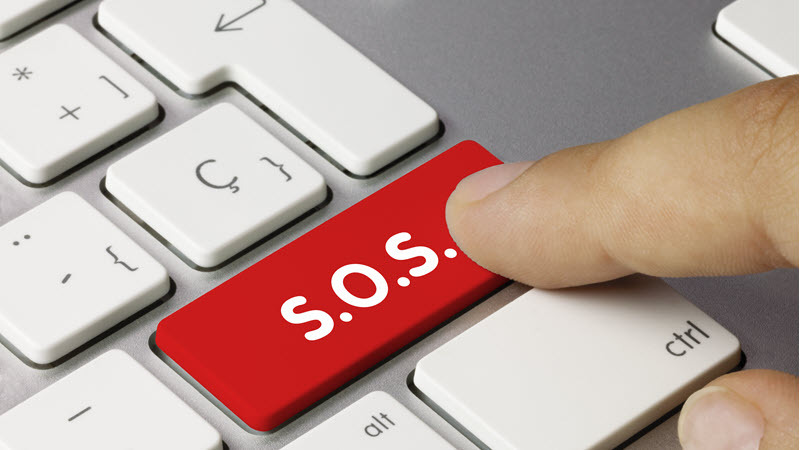Psychedelics-Assisted Therapy: Effective, Economical AND Imperative
Marijuana Stocks, Finance, & InvestingUncategorized November 19, 2021 MJ Shareholders


Despite the adverse market reaction to Compass Pathways’ Phase IIb clinical results, COMP360 still represents:
- A huge improvement on the existing standard of care
- Massive economic savings for the U.S. economy
- Critically needed relief for the 80 million Americans suffering from depression
After a promising surge in October, psychedelic stocks have been slapped down again in November. Why? Market “disappointment” with the Phase IIb clinical trial results released by Compass Pathways (CMPS).
This needs to be put into context, since the Compass results did not, in any way, provide justification for the selloff of other psychedelic stocks.
What may be seen as a (mild) disappointment versus other psychedelics-based treatment is still a huge improvement versus the existing standard of care for depression in general and Treatment Resistant Depression (TRD), in particular.
Equally important, it again shows the fabulous economics associated with psychedelics-based therapies.
However, Compass Pathways had seen its stock run up by 68% since its October 6th low, prior to the release of the results. Then its COMP30 psilocybin-assisted therapy for TRD reported that roughly one-third of patients were in remission after a single therapy session.
b) The results were not nearly as strong as the MAPS Phase III trial of an MDMA-assisted therapy for PTSD, where 90% of participants reported improvement and two-thirds were effectively cured.
It was obviously (b) that induced both the selloff in CMPS as well as other psychedelic stocks, virtually across the board.
The COMP360 success rate was also lower than what has been reported in other psilocybin-based clinical studies, for both depression and other mental health disorders. In other words, the results may have much more to do with the structure of the trial itself than the inherent effectiveness of psilocybin-based therapies.
Psychedelic Stock Watch previously noted some of the factors that could have led to the less-than-spectacular treatment numbers for COMP360.
- Screening of candidates was not rigorous enough
- The dosage selected for the primary test group may not have been optimal
- There had been discussion even in the early stages of Compass’ Phase II trial that the company was taking too aggressive an approach in how it was structuring the clinical trial
In addition, there was some concern expressed about the number of “adverse events” (reactions) from study participants. However, those numbers are not inconsistent with existing therapies for TRD, and it may require nothing other than more rigorous patient screening to lower those totals.
Had Compass conducted a longer study, involving multiple treatment sessions (as MAPS has done in its own clinical trial), the percentage of participants who went into remission could have been far higher.
How COMP360 could impact mental health in the U.S. today
Let’s put aside what might need to be changed with COMP360 protocols and focus on the existing Compass Pathways results. Put those numbers into context with respect to overall mental health and mental health care in the United States – which is a train-wreck.
Statista has recently reported that due to the enormous stresses associated with the Covid-19 pandemic and oppressive lockdowns, the percentage of Americans exhibiting symptoms of depression has nearly quadrupled, from 7% to 25%.
That translates into over 80 million Americans suffering from depression, an increase of nearly 60 million since the start of the pandemic.
Now let’s (hypothetically) “treat” those 80 million people with COMP360. It wouldn’t be cheap.
The 80 million suffering from depression represent roughly double the total number of Americans infected with the Covid-19 virus itself. Compass Pathways hasn’t provided a cost breakdown for treatment with COMP360. However, psychedelics-assisted therapies are generally pegged at ~$1,000 (or less) per session.
Eighty billion dollars is a lot of money. But, again, the number needs to be put into context.
COMP360 has been shown to ‘cure’ roughly one-third of TRD patients with a single session. However, as the name implies, treatment-resistant depression is deemed especially difficult to successfully treat. Thus, we could assume a much higher success rate for COMP360 for the overall U.S. population of depressed people.
Let’s be conservative, and assume that ‘only’ 40% go into remission after one session of COMP360. That would represent over 30 million Americans being cured of their depression.
Conventional therapies haven’t cured that many Americans of depression over the past decade, and with patients often spending years in therapy.
That’s why there is a Mental Health Crisis (not just in the U.S., but globally). That’s why two-thirds of Americans exhibiting symptoms of depression don’t even try conventional therapies: they don’t work.
Because of the utter failure of conventional mental health therapies in the United States, there is a worsening Suicide Epidemic, now in its eighth year.
Because of the utter failure of conventional mental health therapies, the number of deaths in the U.S.’s Drug Overdose Epidemic soared by 30% in 2020 alone.
Every 10 minutes, another American commits suicide. Every 5 minutes, another American dies from a drug overdose.
COMP360 versus conventional mental health care: $80 billion vs. $3 trillion
This utter failure in treating mental health in the United States isn’t due to a lack of spending. Each year, over $300 billion is spent in the U.S. on mental health services, with very little to show for it.
For $80 billion (and a single therapy session), equal to ¼ of one year’s spending on mental health in the U.S., COMP360 could cure more Americans of a mental health disorder virtually overnight than have been cured over the past decade, despite spending ~$3 trillion.
Eighty billion dollars seems like a lot of money, until you compare it with $3 trillion, nearly a 40:1 payoff in favor of psychedelic medicine. And until you stack it up against the $300 billion that is being largely wasted every year in the United States on mental health.
This is the “disappointment” that the market punished so severely, not just with respect to CMPS but nearly all other psychedelic stocks.
A (perceived) “failure” in psychedelics-assisted therapy still represents a spectacular success versus impotent and archaic existing therapies.
MAPS is showing that psychedelics-assisted therapy can achieve even better results (and save even more money) in treating PTSD. And rapidly advancing research on the use of psychedelics to treat addiction indicates that psychedelic drugs will revolutionize treatment for addiction as well.
Much faster. Much cheaper.
The only reason why psychedelics-based therapies look “expensive” with respect to treating overall populations of mental health sufferers is because psychedelics-based treatment clinics need to clean up the mess in mental health that has been created by abysmally ineffective conventional therapies.
The Mental Health Crisis did not occur over night: roughly 2 billion people globally with one or more treatable (but generally untreated) mental health disorders. It represents decades of failure by conventional medicine, and the woefully ineffective drugs supplied by Big Pharma.
Psychedelic medicine is a cost-effective means of paying for decades of failure in treating mental health.
The “economics” of psychedelic medicine are more than compelling, even if we only perform a cost/benefit analysis versus existing therapies. However, as Psychedelic Stock Watch has previously reported the overall economic need for psychedelic medicine is even more imperative
Can the U.S. economy survive without psychedelic medicine?
Before the Covid-19 pandemic even started, the Mental Health Crisis was already costing the global economy over $1 trillion per year due to lost productivity alone. Mental health disorders were already the leading cause of disability.
Now (as we see above) the number of mental health sufferers is increasing exponentially – and so are the economic consequences.
There is a massive “labor shortage” in the United States today. A record 10+ million jobs are sitting unfilled.
Right-wing media pundits claimed this labor shortage was entirely due to “overly generous” Covid-19 benefits from the federal and state governments. They boldly predicted Americans would flock back to work, and the jobs would be filled, as soon as those benefits expire.
They could not have been more wrong.
What has actually happened is that record number of Americans have quit their jobs. Why?
Again, refer to the numbers above: 60 million more Americans are suffering from depression alone. Tens of millions more Americans are suffering from substance abuse, PTSD and other debilitating mental health disorders.
The American Worker is sick and is not being treated.
Conventional therapies can’t treat these people (successfully). But psychedelic medicine can.
How difficult would it be for U.S. employers to find 10 million more workers if there weren’t 80 million Americans suffering from depression? The U.S. “labor shortage” is just the latest consequence of the (untreated) Mental Health Crisis.
Then we have the U.S. “supply-chain crisis”. Store shelves getting increasingly empty.
Part of this problem is undoubtedly transportation bottlenecks and other Covid-related complications. But part of this issue is also due to the labor shortage – and thus the Mental Health Crisis.
Ask retailers why particular items remain out-of-stock long term, and what you often hear is the manufacturer has been unable to maintain production due to “acute worker shortages”.
And things are going to get worse.
The Covid-19 virus continues to circulate and shows no signs of ending. Oppressive government mandates show no sign of ending.
How many more Americans will be suffering from depression a year from now? Twenty million more? Fifty million?
How many unfilled jobs will there be in the U.S. economy a year from now? Fifteen million? Twenty million?
At what point does the U.S. economy simply fall apart due to a lack of (healthy) workers?
Desperate employers are currently boosting pay to try to attract workers. Amazon, in particular, has been in an aggressive recruitment drive.
Amazon may succeed in attracting more workers, with many/most (all?) of them currently suffering from depression, substance abuse or some other mental health disorder.
Paying much more for workers whose productivity will undoubtedly be much lower. What is that going to do to the profit margins for Amazon?
The Lancet Commission estimated (before Covid) that the global economy would lose $16 trillion in productivity alone between now and 2030 due to the Mental Health Crisis. That number is now laughably conservative.
Maybe as corporate profits start crumbling, the Biden administration will stop ignoring the Mental Health Crisis?
Psychedelic medicine, or else…
Without psychedelic medicine, the future is clear.
Our societies will continue to get sicker and sicker mentally. Governments drowning in debt are already spending (wasting) huge numbers of dollars to achieve very little.
Eventually, those governments will run out of treatment dollars. Eventually, our economies are simply going to collapse.
With psychedelic medicine, the future is equally clear.
A solution for the Mental Health Crisis. Hope for the sufferers of the largest pandemic in the history of humanity.
Cost-effective therapies. Healthy workers to provide badly needed support for the economy.
Psychedelic medicine is the future of mental health care. The longer it takes for myopic governments to appreciate this, the more billions of dollars that will need to be funneled into these next-generation psychedelic drugs and psychedelic-assisted therapies.
MJ Shareholders
MJShareholders.com is the largest dedicated financial network and leading corporate communications firm serving the legal cannabis industry. Our network aims to connect public marijuana companies with these focused cannabis audiences across the US and Canada that are critical for growth: Short and long term cannabis investors Active funding sources Mainstream media Business leaders Cannabis consumers









